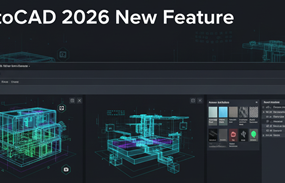What is NASA doing right now? Next Step of NASA
What is NASA doing right now? NASA’s future will keep on being an account of human investigation, innovation, and science. We will return to the Moon to become familiar with what it will take to help the human investigation of Mars and the past.
We will keep on sustaining the improvement of a lively low-Earth circle economy that expands on the work done to date by the International Space Station. NASA specialists will grow new advances to improve air transport at home and address the difficulties of cutting edge space investigation.
Our researchers will attempt to expand comprehension of our planet and our spot known to man. We will keep on attempting to respond to the inquiry, “Would we say we are separated from everyone else?”

Not at all like the manner in which the space program began, NASA won’t race a contender. Or maybe, we will expand upon the network of mechanical, global, and scholastic associations fashioned for the space station.
Business organizations will assume an expanding part in the space business: dispatching rockets and satellites, moving freight and group, building a foundation in a low-Earth circle.
NASA will keep on being a worldwide innovator in logical disclosure, encouraging occasions to transform new information into things that improve life here on Earth.
Moon 2024
In the 50 years since individuals visited the Moon, NASA has kept on pushing the limits of information to convey on the guarantee of American resourcefulness and authority in space.
What’s more, NASA will proceed with that work by pushing ahead to the Moon with space travelers arriving on the lunar South Pole by 2024.
NASA is executing the President’s Space Policy Directive-1 to “lead a creative and reasonable program of investigation with business and global accomplices to empower human extension over the close planetary system.”
NASA remains nearly commercializing low-Earth circle. These encounters and organizations will empower NASA to return to the Moon in 2024 – this chance to remain. NASA’s spine for profound space investigation is the greatest rocket ever assembled, the Space Launch System (SLS), the Orion shuttle and the Gateway lunar order module. With its accomplices, NASA will utilize the Gateway lunar order module circling the Moon as an arranging point for missions that permit space travelers to investigate more pieces of the lunar surface than any time in recent memory.
Aeronautics
NASA’s work in flying has made many years of commitments to flight, public security and our economy. Continuous examination and testing of new flight advancements are basic in these regions and will support the U.S. lead the world in a worldwide flight economy, with expanding benefits around the world. Growing calm supersonic vehicle over land, and calmer, cleaner airplane advances are two different ways NASA is changing flying.

X-57
Craftsman’s idea of NASA’s X-57 ‘Maxwell’ airplane. The X-57 will be the principal all-electric X-plane and will be traveled to exhibit the advantages that electric drive may yield for the eventual fate of the flight. The objective of the X-57 is to accomplish a 500-percent speed up voyage productivity, zero in-flight carbon discharges, and flight that is a lot calmer for the network on the ground.
Earth
Space investigation probably strikes a chord when you consider NASA, however, NASA’s work has numerous advantages that are nearer to home for Earth and its residents.
Geology exploration will proceed, with new innovations that will assist us with understanding Earth as a framework and its reactions to normal or human-prompted changes.
Researchers use satellites, airborne missions, and ground-based perceptions to assemble information about the continuous common and man-made changes to Earth’s territory, water, and air to help improve personal satisfaction around the globe.
Landsat 9
NASA’s most popular Earth Science program will proceed with the dispatch of Landsat 9 out of 2020. Landsat 9 will stretch out our capacity to quantify changes on the worldwide land surface at a scale where we can isolate human and common reasons for change. At the point when land use and asset accessibility issues emerge, Landsat 9 will help leaders settle on educated administration choices. Landsat 9 will along these lines contribute a basic part to the global methodology for observing the wellbeing and condition of the Earth.

Technology
At the point when NASA was made 60 years back, it needed to create the innovation to get where we expected to go, and we will keep on driving the limits of innovation into what’s to come. New rising innovations that open doors for examination and investigation with negligible ventures incorporate NASA’s little satellites. Investigating profound space and three-year missions to Mars present new difficulties: Can you take enough? Would you be able to develop it or make it in space? Would you be able to do your own fixes and support? As in the past, NASA will adjust answers for these and different difficulties into advancements that will improve life at home.
3D Printer
Global Space Station’s 3D printer fabricates protests out of plastic. NASA is growing further developed printers that can include metals and different materials like regolith in with the general mish-mash. Having the option to make parts in space will prove to be useful during crises.

The Human Spaceflight
Almost 50 years back, Apollo 11 space traveler Neil Armstrong strolled on the Moon. NASA is presently getting ready for an eager new period of manageable human spaceflight and disclosure. The organization is building the Space Launch System rocket and the Orion shuttle for human profound space investigation. With the assistance of business and global accomplices, NASA will grow new open doors in lunar circle, including a stage to help surface investigation and fill in as an entryway to Mars. The International Space Station will keep on filling in as the world’s driving lab where specialists can lead front line examination and innovation improvement to empower human and mechanical investigation of the Moon and Mars. The space station will likewise encourage the development of extra exclusive spaceships for proceeded with exploration and transportation in a low-Earth circle.
Orion Spacecraft
Testing for the new Orion spacecraft. In a lab at NASA’s Johnson Space Center in Houston, engineers simulated conditions that astronauts in space suits would experience when the new Orion spacecraft is vibrating during launch atop the agency’s powerful Space Launch System rocket on its way to deep space destinations.

Dream Chaser
Sierra Nevada Corporation’s Dream Chaser cargo spacecraft will join NASA’s commercial cargo providers Orbital ATK and SpaceX to deliver research and supplies to the International Space Station. The Dream Chaser also will be able to bring research back to Earth, and Sierra Nevada Corporation also is developing a crew version of the spacecraft for commercial use.

Space Launch System
NASA’s Space Launch System, or SLS, is a powerful, advanced launch vehicle. With its unprecedented power and capabilities, SLS will launch crews of up to four astronauts in the agency’s Orion spacecraft on missions to explore multiple, deep-space destinations. Offering more payload mass, volume capability, and energy to speed missions through space than any current launch vehicle, SLS is designed to be flexible and evolvable and will open new possibilities for payloads, including robotic scientific missions to places like Mars, Saturn, and Jupiter.

Universe
James Webb Space Telescope
The James Webb Space Telescope, a NASA-drove venture as a team with the European and Canadian space offices, will be the world’s next chief space science observatory. Webb will fathom secrets of our close planetary system, look past to removed universes around different stars, and test the bewildering structures and sources of our universe. Webb will concentrate on each stage throughout the entire existence of our universe, going from the main radiant gleams after the Big Bang to the arrangement of galaxies and the development of our own close planetary system. Webb will open up new windows to consider the environments of planets around different stars and how it identifies with exoplanet frameworks.

Solar System
NASA will be getting back to places recently investigated with goal-oriented new missions and new advances. Much stays to be found out about the Moon and how we may utilize its dirts and different assets to help human homes somewhere else. The perplexing excursion to Mars is moving NASA and its accomplices to sort out some way to arrive, land there, live there, and return home. NASA will likewise be looking for hints of life all through our close planetary system.














No Comments